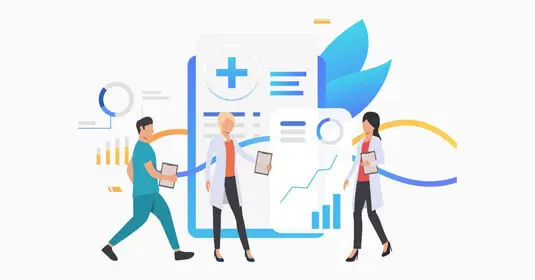
If the COVID-19 pandemic has taught us anything is that healthcare resources are scarce - across the globe. A hospital can be built with the latest technology and equipment, but the functioning and effectiveness of it all comes down to the most prized resource - the hospital staff, both clinical and nonclinical. The key issue comes down to balancing the demand and supply of healthcare professionals.
Furthermore, the rapidly changing nature of the healthcare industry makes resource planning and scheduling even more critical and challenging. In a dynamic industry like healthcare, resource optimization is essential.
Join us as we explain why resource optimization is crucial and how it can be used in the rapidly evolving medical field.
Resource Optimization is the process of increasing efficiency in how resources (in this case - people) are utilized in any given project or task. A resource should never be over or under utilized in order to achieve maximum productivity.
In the medical and healthcare sector, we often come across scenarios where resources are over-allocated or over-utilized because of the following scenarios.
These errors and overutilization often results in employee burnout, long wait time for patients , poor medical ratings, lower billings and decreased productivity.
By optimizing your resource you can align the right resources with current needs based on skills, availability and case priority. When resources are optimized, overall productivity and efficiency increases - which in the medical field often means more lives are saved!
In the medical field, resource management and planning has to be handled differently from the planning of physical capital, like equipment. Why? The healthcare field is ever dynamic, success is often a matter of life and there are multiple moving parts. For instance, schedulers have to manage outpatient appointments, alongside serving walk-ins and emergencies in ER.
So how can one help the healthcare sector with scheduling and balancing their most precious resources? By implementing a resource planning software like eResource Scheduler.
Adding eRS to a medical facility can yield the following benefits.
We've highlighted how a resource scheduling software can increase optimization and why that is critical to healthcare. Now, let's delve deeper into some of the top features of eRS.
eRS offers centralized, flexible and real-time scheduling capabilities from a single-screen dashboard. Hospital schedulers can view data on all human capital across departments, shifts, locations and facilities. The platform can accommodate rotations, last-minute updates and your scheduling preferences. A scheduler can even add buffer times between appointments to ensure the staff gets adequate rest time. The tool will also reduce the time taken to check for doctor's availability from another shift or branch.
The application allows a task to be split between resources, if required. This helps make last minute adjustments and improves the ability to deal with emergencies.
In a medical scenario, the majority of tasks are interdependent. For example, if "Task A" which is a full body blood report does not get completed, you cannot start "Task B" which in this case could be a medicine schedule or surgery. These interdependencies are inevitable, difficult to manage and play a critical role in ensuring a successful outcome.
Such situations can easily be managed with the Gantt chart, which provides a visual overview of each task in relation to the larger picture. A Gannt chart is useful in determining task dependencies and allows for schedule adjustments in case of occurrence such as delayed start or new tasks being added.
eRS provides upper management with real-time access to the right data regarding workflow progress and the resulting financial impact. The dashboard gives insights on user activity and also financial data like cost, revenue and profitability reporting. The financial reports, specifically costs and billings, can be customized to be viewed at resource, project, role, shift or even department level. The color coded screens quickly draw attention to profit and loss areas that need change.
The healthcare industry, globally, is under constant pressure to meet the evolving quality demands of patients, manage rising costs and improve their services to achieve better outcomes and improve access to better health.
eResource Scheduler can help improve a facility's ability to deliver top notch care with the least interruptions or lags.
Want first hand experience of how a resource scheduler can make a world of a difference in your healthcare facility? Why not speak to an account manager at eRS for a personalized demo? We even provide a 60-minute free trial of our enterprise software.
Plan Smarter. Schedule Faster.
Join thousands already using eResource Scheduler to align teams, time, and tasks seamlessly.